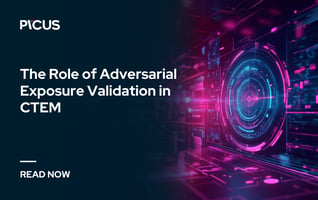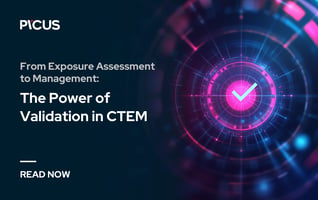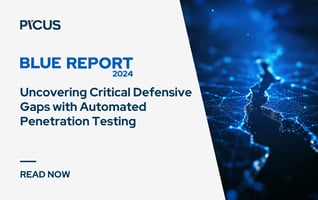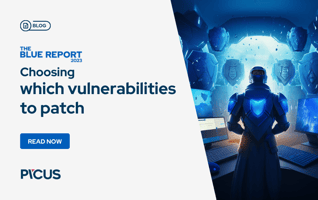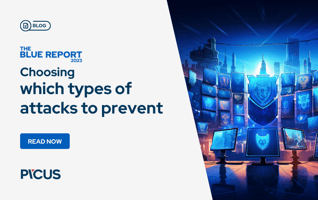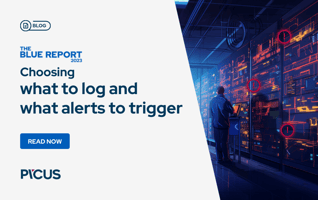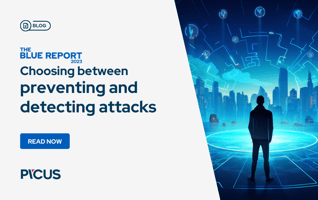The Blue Report 2024
Get a comprehensive analysis of over 136 million cyber attacks and understand the state of threat exposure management.
As organizations keep investing more in Continuous Threat Exposure Management (CTEM) programs, the increasing demand for Adversarial Exposure Validation has driven the interest of security teams toward technologies such as Breach and Attack Simulation and Automated Penetration Testing more and more into their daily activities.
In this blog, we outlined how adversarial exposure validation and exposure assessment approaches of CTEM were featured in the "Gartner Hype Cycle for Security Operations, 2024" report. We also explain how those approaches will help organizations reach a higher level of maturity with their security operations and CTEM implementations.
Download Gartner® Report: Hype Cycle for Security Operations
Evolving Exposure Assessment and Adversarial Exposure Validation Approaches in CTEM
Continuous Threat Exposure Management (CTEM) mainly deals with proactive identification, validation, and mitigation of possible security threats in advance before they can be utilized by threat actors. Gartner defined the CTEM to be a five-step process in scoping, discovery, prioritization, validation, and mobilization activities to continuously improve the threat exposure management of an organization.
Figure 1: CTEM Process by Gartner
As CTEM is more well-known among organizations and security vendors, Gartner has consolidated certain technologies in the exposure space under two main categories.
- “Vulnerability Assessment” and “Vulnerability Prioritization Technology” have been merged into “Exposure Assessment Platforms (EAPs).” EAPs enable organizations to continuously identify and prioritize exposures across their attack surfaces.
- “Breach and Attack Simulation (BAS)” and “Automated Penetration and Red Teaming Technology” are consolidated into “Adversarial Exposure Validation”. These validate the presence of exploitable exposures through offensive security methods.
For repeatable and efficient CTEM practices, Exposure Assessment Platforms together with Adversarial Exposure Validation technologies have become an indispensable arsenal for security teams. These complementary technologies allow organizations to identify exposures and then validate their exploitability to ensure that remediation efforts focus on the most critical threats. The following sections outline how these technologies work together and contribute to CTEM implementation at an organization.
Exposure Assessment Platforms
A typical enterprise network would be made up of hundreds of endpoints, servers, and security controls. These contribute to an enormous attack surface with ever-growing exposures. That's why the first part of the CTEM process involves identifying exposures and prioritizing them before taking any action. In this effort, security teams directed their attention to vulnerability assessment and vulnerability prioritization technologies. In the latest Hype Cycle for Security Operations report, Gartner subsumed these technologies into Exposure Assessment Platforms (EAPs).
Exposure Assessment Platforms allow an organization to continuously identify and prioritize exposures (e.g., vulnerabilities and misconfigurations) across a wide set of assets. Due to the continuous and automated capabilities, these platforms offer organizations a more consolidated view of high-risk exposures and enable them to examine the attack surface with clear visibility.
In CTEM programs, many EAP products serve as a central location to display exposure assessments with their risk scoring, visibility of related assets, and asset ownership. This kind of visualization enables security teams to track surfacing trends and follow the life cycle of vulnerabilities.
Exposure Assessment Platforms often use the Common Vulnerability Scoring System (CVSS) to prioritize which vulnerabilities to fix. CVSS is a good starting point. On the other hand, it expresses the risk level of a particular vulnerability on an individual asset and does not reflect the effect that will be caused on the whole infrastructure. Other factors security teams should consider include any compensating security controls in place, how easily the vulnerability can be exploited, whether the vulnerability can be reached by an attacker, and if there is a known exploit available. This is why Adversarial Exposure Validation is used to pinpoint the actual impact caused by identified vulnerabilities by EAPs.
Adversarial Exposure Validation
Adversarial Exposure Validation technologies enable organizations to assess the true impact of identified exposures. By simulating and emulating real-world attacks and using directly adversaries' TTPs, Adversarial Exposure Validation provides security teams with continuous, consistent, and automated proof of the feasibility of various attack scenarios. This allows organizations to be more effective in prioritizing high-impact exposures and remediating them first to improve security posture. Adversarial Exposure Validation will also help security teams to validate the effectiveness of their security controls, seeing where their defensive measures hold against real-life threat actors.
As an integral component of the CTEM framework, Adversarial Exposure Validation works hand in glove with Exposure Assessment Platforms (EAPs) to build an overall threat exposure management strategy. Unlike EAPs, which completely depend on CVSS or EPSS-based risk scoring, Adversarial Exposure Validation simulates real-life threat behavior, giving security teams a better sense of which vulnerabilities are most likely to be exploited and which ones can be prioritized.
With automation capabilities, Adversarial Exposure Validation solutions enable more frequent and consistent testing of the organization's defenses - granting real-time insight into emerging threats and shifting risks. By continuously validating exposures, security teams are assured that they address the most critical issues as they arise and do not react to outdated and infrequent assessments.
What's more, mature Adversarial Exposure Validation tools go beyond identification and validation by providing actionable, detailed mitigation recommendations for each validated exposure. This empowers security teams to take immediate steps toward remediation, significantly reducing the time and effort required to address critical vulnerabilities. Consequently, through this knowledge, organizations can stay ahead of evolving threats, strengthen their security posture, and reduce the risk of costly breaches.
Adversarial Exposure Validation with Picus Platform
Even before developing this concept of CTEM, many organizations were working with technologies such as Vulnerability Management (VM) tools; they used VMs to identify vulnerabilities. However, most of these technologies come up with a high number of findings; most probably would not be readily exploitable or relevant to an organization's critical assets. The large quantity of findings caused by a lack of proper context and validation often overwhelmed security teams. CTEM's introduction showed that, in general, exposure validation technologies are needed to help security teams focus on vulnerabilities carrying the greatest risk.
As the leading exposure validation solution, Picus Platform complements the exposure assessment platform and enables organizations to focus on security risks that matter the most. Picus Platform seamlessly integrates with vulnerability management and cyber threat intelligence technologies and validates the identified exposures with its Breach and Attack Simulation technology and automated penetration testing solution.
Prior to CTEM, vulnerability management left organizations with too many prioritized yet isolated issues with little to no detail about their potential impact. That's why the Validation step is the defining trait of the CTEM process, and it allows organizations to contextualize the identified exposures' exploitability, leading to effective prioritization of remediation.
|
Without validation, what is today identified as an "unmanageably large issue" will become an "impossible task." Gartner, 2024 Strategic Roadmap for Managing Threat Exposure |
Picus Platform is the perfect solution for the Validation step in the CTEM as it provides the most comprehensive exposure validation in the industry with its leading Breach and Attack Simulation and Automated Penetration Testing technologies. With Picus, organizations can validate not only the exposures identified by EAPs but also gaps in security controls that are out of the scope of EAPs. Moreover, Picus Mitigation Library simplifies the Mobilization step with clear and actionable mitigation suggestions to remediate validated exposure. Thus, Picus provides full visibility to an organization's exposures and arms security teams with the ability to identify and fix the most critical cyber risks swiftly.
Conclusion
This year's Hype Cycle for Security Operations report shows that the efficient and effective way to adopt the CTEM framework involves two key components: Exposure Assessment Platforms (EAPs) and Adversarial Exposure Validation technologies. This synergy between EAPs with Adversarial Exposure Validation solutions provides an organization with a robust framework in improving its security posture. However, integrating these technologies into a seamless and actionable process remains a complicated effort that demands a very sophisticated and capable solution.
As the leading adversarial exposure validation solution, Picus Security Validation Platform is unmatched in enabling an organization to focus on and remediate the exposures posing the greatest risk. No other solution can match its leading integrations with existing vulnerability management systems while offering the broadest exposure validation through the use of advanced technologies such as Breach and Attack Simulation, Automated Penetration Testing, and Red Teaming. Additionally, actionable insights and remediation guidance through Picus Mitigation Library empower the ability to take immediate, assured action against validated exposures.


